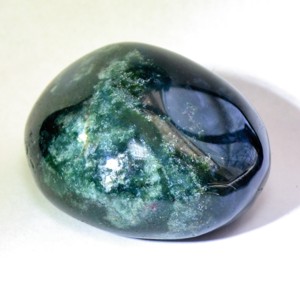Today, we have home security systems that set off an alarm if an intruder enters. In the future, we will be protected by a force field, like the one Scottie switches on when the Klingons are at the backdoor of the Enterprise and Captain Kirk starts getting nervous.
In ancient times, say roughly 20,000 B.C. the Stone Age people found comfort in agates, as a form of protection.
History
In all of recorded history, agate is the first stone ever mentioned in an ancient document. Agate was highly prized as a talisman or amulet by primitive people. Mithridates, king of Pontus, had an enormous collection of thousands of agate bowls. This was one way of displaying one’s wealth and at the same time, protecting one’s kingdom from enemies. Agate bowls were also prized in the Byzantine Empire. Seeking out the finest, artistically crafted agate bowls became almost competitive among European royalty during the Renaissance. Most major museums, including the Louvre and the Metropolitan Museum have spectacular examples of fine agate.
Myths & Lore
Agate was said to quench thirst if placed in the mouth of a parched sufferer. It was believed to protect against fever. Persian magicians even used agate to ward off storms. In many cultures agate is believed to cure the sting of a scorpion and the bite of a snake, calm the mind, prevent infection and silence thunder and lightning. When placed at the head of the bed, agate was thought to provide happy dreams. Many people today feel agate can cure a poor appetite and protect against negative energy; creating a peaceful, contented aura.
Facts
Agate is a form of chalcedony, usually graphically banded and at least partially translucent. Agates are found as nodules or geodes in siliceous volcanic rocks. Agate was named from where it was first found - by the River Achates (now called the river Drillo) in Italy. There are a vast assortment of different types of agate. Each is beautiful, with its own distinct variations.
Blue Lace Agate is an attractive cryptocrystalline quartz stone. This agate was first discovered in the early 1960's by an American prospector, George Swanson, in the southwestern African region of the Kalahari desert of Namibia. This particular area is believed to be the only known deposit in the world of this type of agate. This lovely agate is pale blue, on the verge of lavender, with white lace filaments that run through the stones.
Moss Agate is beautiful white or milky white with black inclusions. It is termed Moss Agate because the inclusions are shaped like spidery veins of moss. Usually translucent but sometimes opaque, this material also sometimes has orange in it. Moss Agate is found in Australia.

Fire Agate is a semi-precious natural gemstone created by massive volcanic activity during the Tertiary Period, which began 65 million years ago. This exceptional agate is found only in certain areas of northern Mexico and the southwestern United States. Fire agates have beautiful iridescent rainbow colors, similar to opal and labradorite. The sparkling, shimmering kaleidoscope of colors found within fire agates is created by what is called the “Schiller effect.” Schiller is German for "twinkle." The extraordinary brilliant light diffraction, originating from below the surface of a stone occurs when light is reflected between layers of minerals.
Is it any wonder that with so many fascinating, glorious varieties of beautiful agate, that we treasure these stones today, just as the ancients did?
Author: Diane Weisbeck
Article Source:
http://www.swcreations.net/